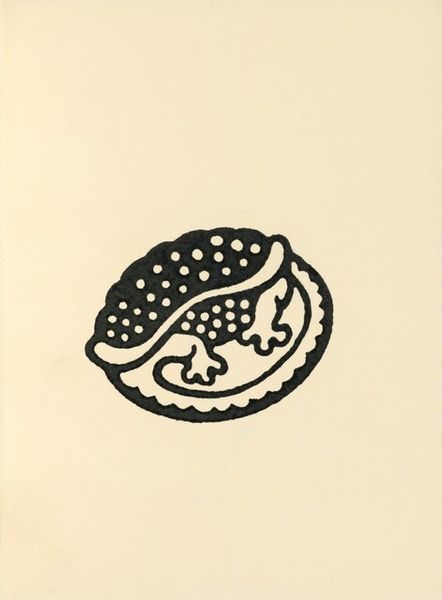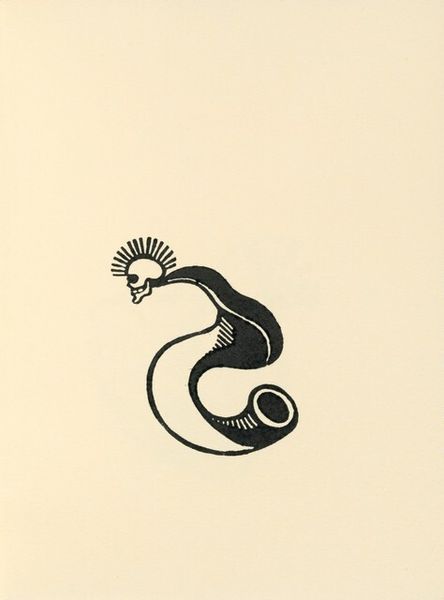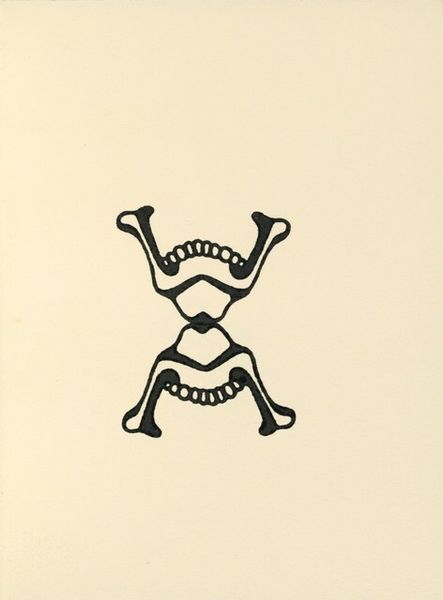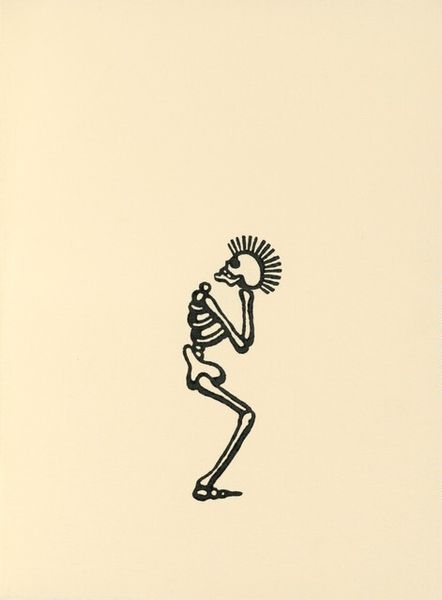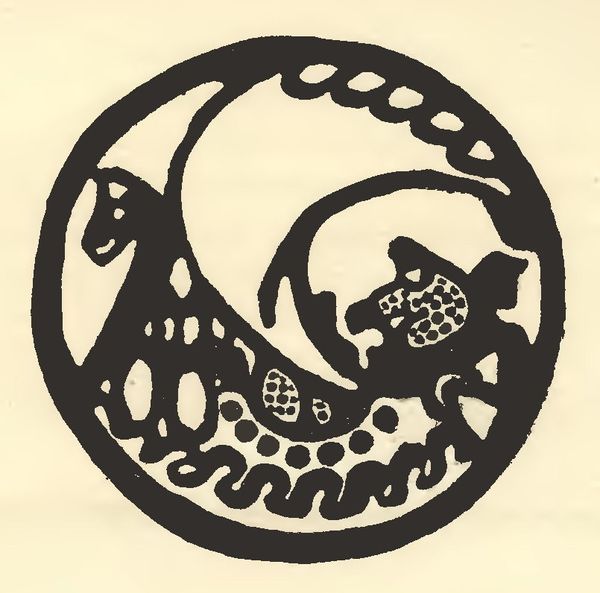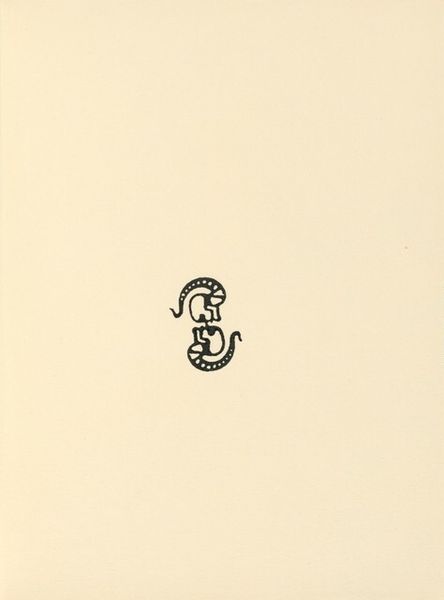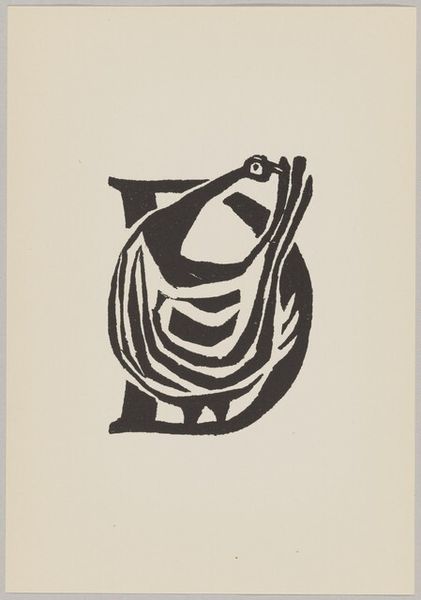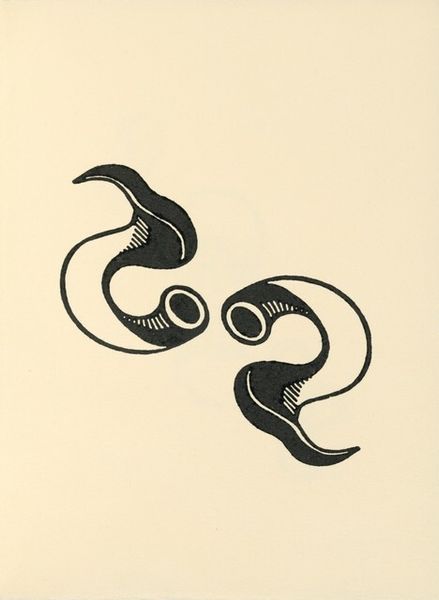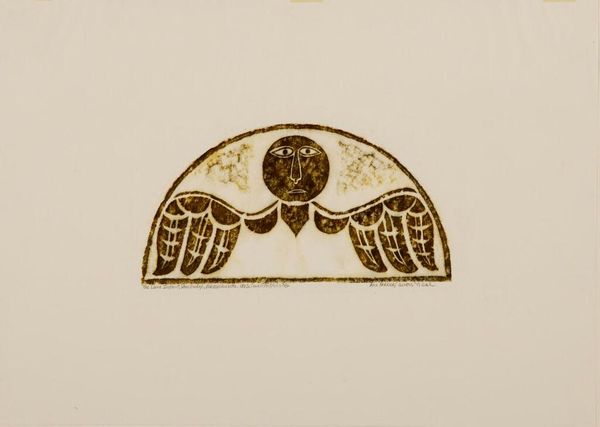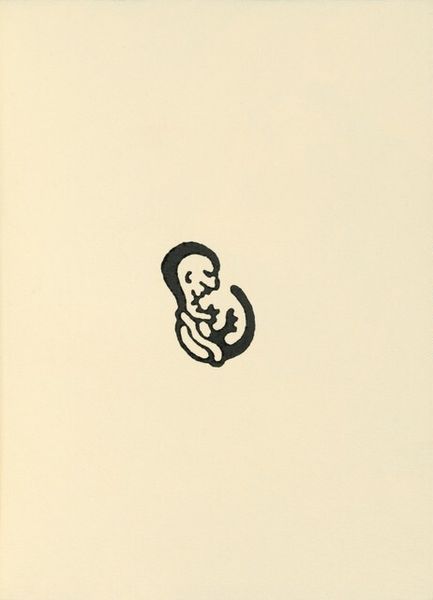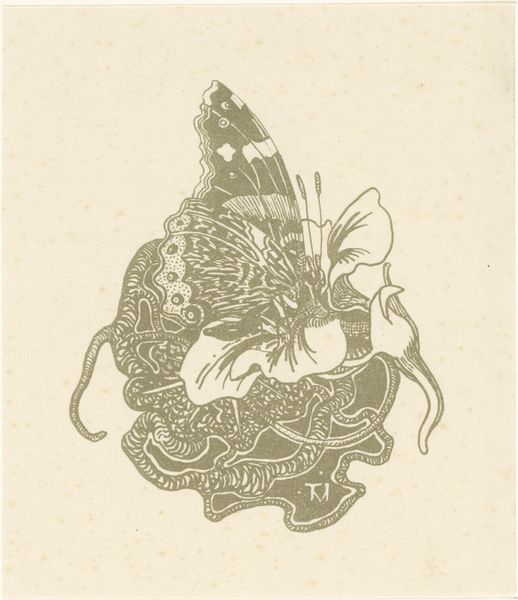![Untitled ["tattoo" book] by James McCracken Jr.](/_next/image?url=https%3A%2F%2Fd2w8kbdekdi1gv.cloudfront.net%2FeyJidWNrZXQiOiAiYXJ0ZXJhLWltYWdlcy1idWNrZXQiLCAia2V5IjogImFydHdvcmtzL2YyNmI4MDMyLWJhMzUtNDU4OC1iMjk5LTUzYjJhNWI5M2NmZC9mMjZiODAzMi1iYTM1LTQ1ODgtYjI5OS01M2IyYTViOTNjZmRfZnVsbC5qcGciLCAiZWRpdHMiOiB7InJlc2l6ZSI6IHsid2lkdGgiOiAxOTIwLCAiaGVpZ2h0IjogMTkyMCwgImZpdCI6ICJpbnNpZGUifX19&w=1080&q=75)
drawing, graphic-art, ink
#
african-art
#
drawing
#
graphic-art
#
ink line art
#
ink
#
geometric
#
abstraction
Dimensions: overall (closed): 17.1 × 13 × 1.5 cm (6 3/4 × 5 1/8 × 9/16 in.) sheet (each approx.): 16.4 × 12.6 cm (6 7/16 × 4 15/16 in.)
Copyright: National Gallery of Art: CC0 1.0
Curator: This striking ink drawing from 1971 is simply titled "tattoo" book, by James McCracken Jr. There's an undeniable graphic punch to it. Editor: It leaps off the page, doesn't it? I see this almost primal bird form. Is it about freedom, perhaps, or the hunt? The symbolism of birds is just so deeply embedded in us. Curator: Exactly, it feels connected to ancient visual traditions. McCracken, though self-taught, was deeply involved with the Black Arts Movement. Consider how his art engaged with redefining identity and asserting cultural pride. The imagery here seems linked to African visual traditions, with strong geometric forms that we see across the continent. Editor: Those interlocking shapes really speak to me. Notice the dots tracing along what appears to be the wing and the creature’s neck, all executed in stark black ink, full of movement. It resembles glyphs or stylized totems and reminds me of West African Adinkra symbols. It certainly invites readings related to cultural heritage and perhaps also some coded, personal meaning. Curator: It's easy to see McCracken deliberately employing these echoes. He’s tapping into collective memory, a shared symbolic language used to convey messages. These are choices laden with historical and political significance for the artist and the viewers of the time. And how they continue to affect us now. Editor: Looking closely, there’s something ambiguous about the being depicted: part bird, part... something else? Almost reptilian in texture and stance. And the circular eye stares directly outwards—perhaps an embodiment of ancestral vision and presence. Curator: I agree! It disrupts any single easy reading. In many ways it invites us to think about what “tattoo” really represents in the African-diasporic context: a mark of identity, resistance, remembrance, or belonging? These bold designs allow wearers—literal or figurative—to broadcast their own history on their skin. Editor: It seems that this evocative image speaks volumes about permanence, ancestry, and perhaps reclamation of selfhood. Curator: Indeed. Through these images, we can consider visual motifs functioning as potent historical and cultural agents.
Comments
No comments
Be the first to comment and join the conversation on the ultimate creative platform.
